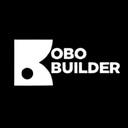Getting Started with Robotics: A Beginner’s Guide
Robotics is an exciting field that blends engineering, programming, and creativity to bring machines to life. If you’ve ever dreamed of building your own robot but didn’t know where to start, this guide is for you! Drawing from my journey into robotics, I’ll walk you through the basics and help you take your first steps toward creating something amazing.
BLOG LIST
1/15/20253 min read
1. What is Robotics?
At its core, robotics is about designing, building, and operating machines that can carry out tasks—either autonomously or with human guidance. Think of robots that assist in surgeries, clean homes, or even explore Mars! For me, the thrill of robotics comes from turning an idea into a functioning creation that interacts with the world.
2. Why Learn Robotics?
Unlock Career Opportunities: Robotics is booming in industries like healthcare, manufacturing, and space exploration.
Develop Problem-Solving Skills: Every robot you build will challenge your creativity and critical thinking.
Learn by Doing: Robotics merges hands-on engineering, electronics, and programming.
It’s Fun! Seeing a robot you built come to life is incredibly rewarding.
When I built my first line-following robot, it was a simple project—just a motor, some sensors, and an Arduino. But the excitement I felt watching it navigate a track on its own was unforgettable!
3. Basic Components of a Robot
Understanding a robot’s anatomy is key. Here are the main components you’ll encounter:
Microcontroller/Processor: This is the brain (e.g., Arduino, Raspberry Pi).
Actuators: These make the robot move (e.g., motors, servos).
Sensors: Sensors help the robot perceive its environment (e.g., ultrasonic sensors for distance, cameras for vision).
Power Supply: Every robot needs energy to function, often from batteries.
Chassis/Structure: The physical body that holds it all together.
When I built a robot for a local competition, choosing the right sensors was a game-changer. It made my bot faster and more responsive than I’d expected!
4. Essential Tools and Materials
Here’s a beginner’s toolkit that I personally recommend:
Basic Tools: Screwdrivers, pliers, wire cutters, and a soldering iron.
Electronics: Breadboards, resistors, LEDs, and jumper wires.
Microcontroller Kits: Arduino kits are beginner-friendly and versatile.
Motors: DC motors, stepper motors, or servos.
Power Sources: Rechargeable batteries or USB power banks.
I remember struggling to solder wires neatly during my first project—it’s a skill that takes practice but pays off!
5. Choosing Your First Project
Starting small is the key to success. Here are beginner-friendly ideas:
Line-Following Robot: This project teaches you how to integrate sensors and control motors, providing a solid foundation for more complex builds.
Obstacle-Avoiding Car: A great introduction to programming logic and real-world applications of robotics.
LED Blink Program with Arduino: A simple project to familiarize yourself with coding and electronics basics.
I still remember the pride I felt when my first line-following robot worked perfectly on its track. It might seem simple, but completing these small projects builds confidence and sets the stage for tackling bigger challenges.
6. Programming Basics for Robotics
Robots need brains, and programming gives them one. Popular languages include:
Python: Great for beginners and advanced projects.
C/C++: Ideal for microcontrollers like Arduino.
Scratch: A visual language perfect for kids and those new to coding.
Start with simple programs—like turning on an LED—and build up to complex logic. I often test my code in small pieces to make debugging easier.
7. Building Your First Robot
Follow these steps for a successful first build:
Plan Your Design: Sketch your idea and define its purpose.
Gather Components: Make a checklist of what you need.
Assemble the Robot: Build the chassis, attach components, and connect wires.
Write the Code: Program the microcontroller with clear, modular code.
Test and Iterate: Run your robot, note any issues, and refine it.
When I built my first robot, the wheels wouldn’t turn properly because the chassis was uneven. Small fixes like these teach you invaluable lessons!
8. Learning Resources
Here are resources I found helpful:
Books: “Robotics for Beginners” by John Baichtal.
Online Courses: Platforms like Coursera and Udemy offer fantastic tutorials.
Communities: Join robotics forums and groups to share ideas and learn from others.
YouTube: Channels like "Learn Robotics" and "DroneBot Workshop" are goldmines of information.
9. Safety Tips
Always disconnect power before working on circuits.
Be careful with sharp tools and hot soldering irons.
Follow guidelines for handling batteries and electronics.
10. Next Steps
Once you’ve built your first robot, consider:
Adding AI to make it smarter.
Building robots for specific purposes like drones or robotic arms.
Participating in robotics competitions to challenge yourself.
Starting your robotics journey might seem daunting, but every expert was once a beginner. Embrace the process, stay curious, and enjoy the satisfaction of bringing your creations to life. Let me know about your first project—I’d love to hear your story!
